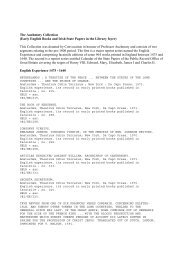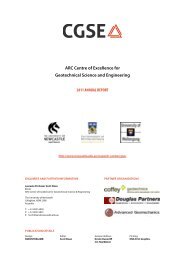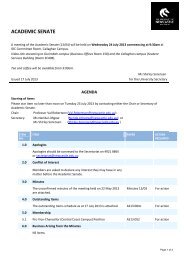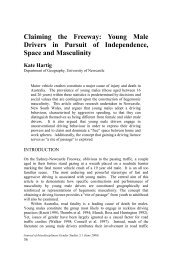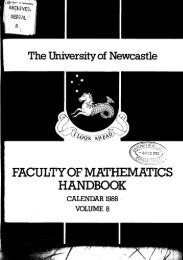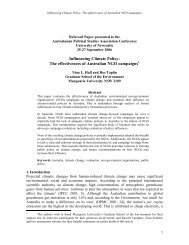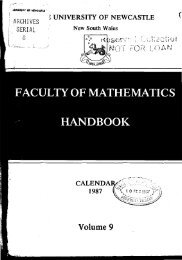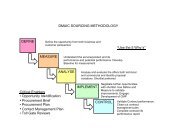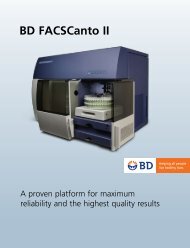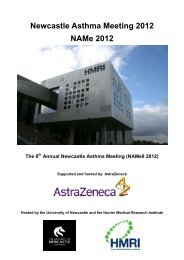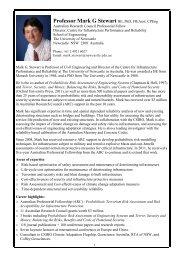n - University of Newcastle
n - University of Newcastle
n - University of Newcastle
You also want an ePaper? Increase the reach of your titles
YUMPU automatically turns print PDFs into web optimized ePapers that Google loves.
H~V IRTEODUCTION. WTBODUCTIOR. xv<br />
itself in his natural intelligence and his personal demeanour. He<br />
grew up a tall and handsome youth, with the features and commanding<br />
mien <strong>of</strong> his grandfather, who had been much loved<br />
and regretted. While still living in obscurity as a shepherd, he<br />
gained such a knowledge <strong>of</strong> astronomy as made him a wonder to<br />
many in later years, and his gentle manners so shone through<br />
rustic attire that he secured the affection <strong>of</strong> a lady <strong>of</strong> rank, well<br />
known at that time as the " nut-bi-own maid "-the daughter <strong>of</strong><br />
Sir John St. John ; her he married. When the "Wars <strong>of</strong> the<br />
Roses " were ended by the accession <strong>of</strong> Henry VII., and peace was<br />
again come, the young Lord Clifford, now 33 years <strong>of</strong> age, asserted<br />
his right to the Londesborough estates, and, on petition to the<br />
King, mas restored to his title and his lands. The men <strong>of</strong> the time<br />
called him the " Shepherd Earl." In addition to Londesborough,<br />
the place <strong>of</strong> his birth, he was owner <strong>of</strong> Brougham and Skipton,<br />
but he usually resided near Bolton, and there, after many years,<br />
he died, and was buried in the choir <strong>of</strong> the Abbey. His son was<br />
created Earl <strong>of</strong> Cumberland; and a grandson was a na~al commander<br />
in Elizabeth's reign. In 1742 the heiress <strong>of</strong> the Cliffords<br />
married an ancestor <strong>of</strong> the present Duke <strong>of</strong> Devonshire, and with<br />
her the estates in Yorkshire passed over to that family.<br />
This incident has only a remote connection with the Threlkeld<br />
family, but I have giren it here as an interesting glimpse into the<br />
private history <strong>of</strong> noble families in those troublous times.<br />
Our author was born in 1788 at the village <strong>of</strong> Hatherleigh,<br />
and, while still a boy, he experienced deep religious convictions<br />
nuder the ministry <strong>of</strong> the vicar <strong>of</strong> the parish. This ultimately led<br />
to his ozering himself to the London Missionary Society for work<br />
in the foreign field, and so, after several years <strong>of</strong> instruction and<br />
training at Gosport under Mr, Bogue, he was ordained, along with<br />
Mr. Ellis, on the 8th November, 1815, and appointed to labour at<br />
Rat-atba, in the ' Society ' group <strong>of</strong> the South Seas. Towards the<br />
end <strong>of</strong> that month he embarked in a government vessel, the<br />
"Atlas," which was about to proceed to Sydney. At Rio de<br />
Janeiro, his wife fell ill, and for nearly a year he had to remain there,<br />
all the while acting as the first Protestant minister whom the<br />
English residents at Rio ever had. On 22nd. January, 1817, he<br />
sailed again, along with Messrs. John Williams, Darling, Bourne,<br />
and Platt, all bound for missionary work in the islands <strong>of</strong> the<br />
South Seas.<br />
After a short stay at Hobart, they reached Sydney on the 11th<br />
May, 1817, and Mr. Threlkeld proceeded to Raiatea soon after.<br />
The death <strong>of</strong> his wife led him to return to Sydney in 1824.<br />
Next year, the London Missionary Society established a mission<br />
to our native blacks at Lake Macquarie under the care <strong>of</strong><br />
Threlkeld, and there, with assistance subsequently from the<br />
Government <strong>of</strong> the Colony- <strong>of</strong> New South Wales, the mission<br />
mas maintained till December 31, 1841, when the number<br />
<strong>of</strong> the natives there had so declined that it had to be<br />
abandoned. It was during those seventeen years <strong>of</strong> labour that<br />
BIr. Threlkeld acquired so much experience in the use <strong>of</strong> the<br />
native dialect <strong>of</strong> the tribe, that he was enabled to prepare the<br />
works which form the bulk <strong>of</strong> this volume. The year 1842 and<br />
the surrounding years were a time <strong>of</strong> terrible commercial distress<br />
in the colony, and, when the mission station was abandoned, XI:<br />
Welkeld lost all his property there. But, in 1845, he was<br />
appointed minister <strong>of</strong> the Mariners7 Church, Sydney, and in that<br />
<strong>of</strong>ice he continued till his death. By his first wife he had one<br />
son and three daughters ; by his second wife-a daughter <strong>of</strong> Dr.<br />
ArndeII, the Colonial surgeon <strong>of</strong> the time-he had two sons and<br />
three daughters. Those <strong>of</strong> his children who still survive occupy<br />
honourable positions in this colony.<br />
The following is believed to be a complete list <strong>of</strong> Blr. Threlkeld's<br />
labours in the dialect which 1 have called the ' Awabakal ' :-<br />
1827.-" Specimens <strong>of</strong> the Aboiib&al Language" ; printed then.<br />
1829.-First draft <strong>of</strong> the Translation <strong>of</strong> the Gospel by St. Luke.<br />
1832.-Translation <strong>of</strong> Prayers for Morning and Evening Service<br />
from the Ritual <strong>of</strong> the Church <strong>of</strong> England ; these were selected<br />
by Archdeacon Broughton.<br />
1834.-" The Australian Grammar" published. Mr. Threlkeld's<br />
memoranda show that at the beginning <strong>of</strong> this year the follow-<br />
ing subjects were occupying his attention :-<br />
1. Specimens <strong>of</strong> the Language.<br />
2. The Australian Grammar.<br />
3. The Gospel by St. Luke, under revisal.<br />
5. The Gospel by St. Mark, in preparation. The first rough<br />
translation was completed in 1837.<br />
5. The Gospel by St. Matthew, just commenced.<br />
6. The instruction <strong>of</strong> two native youths in writing and read-<br />
ing their own language.<br />
7. Reading lessons selected from the Old Testament.<br />
8. An Australian Spelling Book.<br />
1836.-" The Spelling Book" printed.<br />
1850.-" The Key to the Aboriginal Language" published. '<br />
1859.-At the time <strong>of</strong> his death he was engaged in completing<br />
the translation <strong>of</strong> the four Gospels; and was proceeding with<br />
the " Lexicon to the Gospel by St. Luke." Thus our author's<br />
life closed in the midst <strong>of</strong> 'labours many.'



